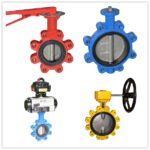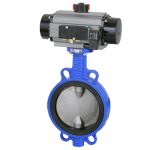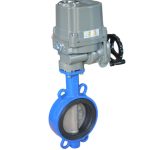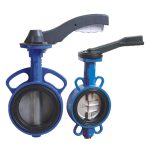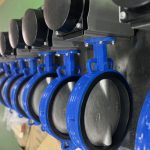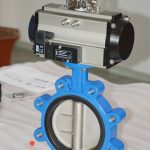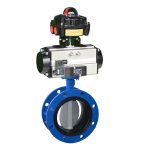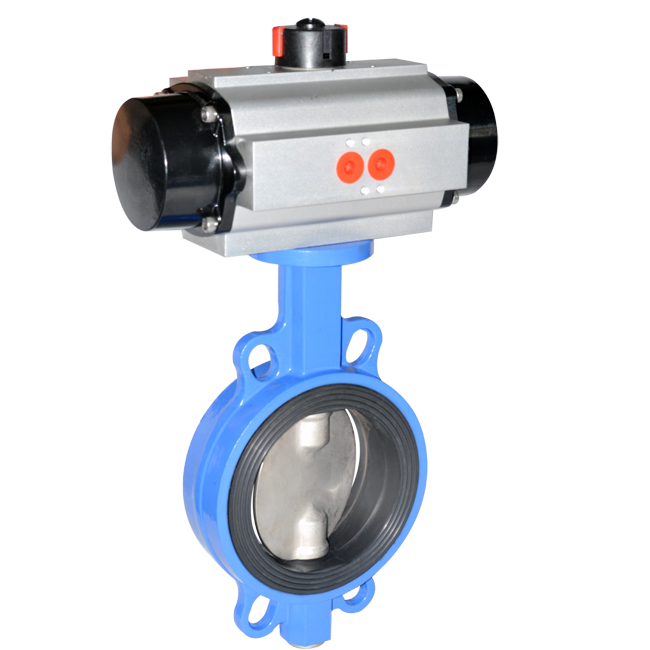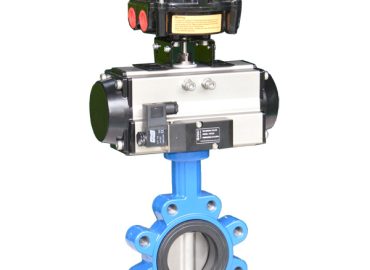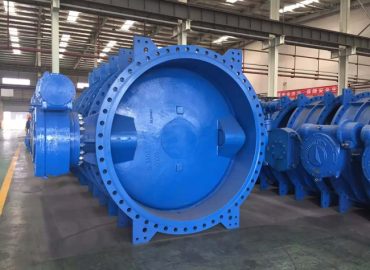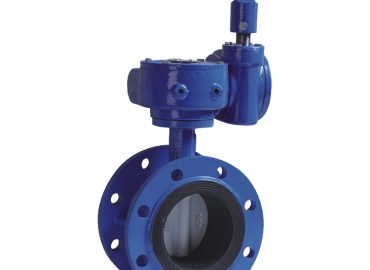Butterfly valves are commonly used in industrial applications to regulate the flow of fluids and gases. However, not all butterfly valve are created equal. Two popular types of butterfly valves are wafer and lug style butterfly valves, which have distinct differences in terms of design, application, and installation. Understanding the key features and benefits of each type can help industrial professionals make informed decisions when selecting the right butterfly valve for their specific needs. In this article, we will explore the difference between wafer and lug style butterfly valves to provide a comprehensive overview of their features, advantages, and ideal applications.
Introduction
Wafer vs lug style butterfly valve are two types of wafer butterfly valve that differ in their design, installation, and application. Wafer-style butterfly valves are designed to be installed between two flanges and are lighter in weight, making them more cost-effective than lug-style butterfly valves. They are ideal for applications where space is limited and a low-profile valve is required. On the other hand, lug-style butterfly valves are designed with threaded inserts on the valve’s body, allowing them to be bolted to a system without the need for additional bolts or nuts. This makes them easier to install and remove for maintenance purposes. Additionally, lug-style butterfly valves are suitable for high-pressure applications and are designed with thicker bodies to withstand greater pressures. Overall, selecting between wafer and lug style butterfly valves requires consideration of specific needs such as pressure, size, and application.
Brief overview of butterfly valves
Lug Butterfly valve are a type of quarter-turn valve that is commonly used to regulate the flow of fluids and gases in industrial applications. They are called butterfly valves because their shape resembles that of a butterfly with two semicircular discs attached to a central spindle or stem. The discs, also known as the valve’s “butterfly,” rotate around the stem to open or close the valve. Butterfly valves are popular due to their simplicity, ease of use, and cost-effectiveness. They are available in a variety of materials such as stainless steel, PVC, and cast iron, making them suitable for different applications, including water treatment, chemical processing, and food production.
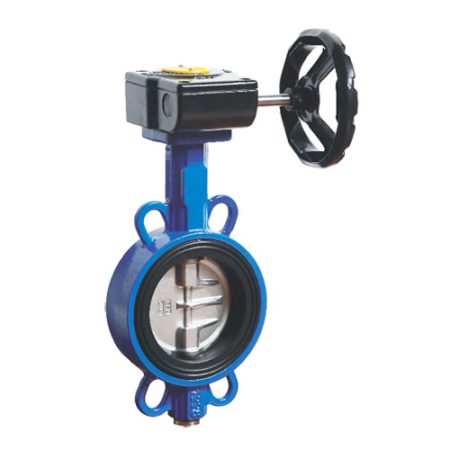
Importance of understanding the difference between wafer vs lug style butterfly valve
It is important to understand the difference between wafer and lug style butterfly valves because each type has unique characteristics that make them better suited for certain applications. The selection of a butterfly valve depends on various factors such as pressure, size, temperature, flow rate, and the application’s specific needs. A wrong choice of valve can result in poor performance, system failure, or even safety hazards. Therefore, understanding the differences between wafer and lug style butterfly valves can help industrial professionals make informed decisions about which type of valve is best suited for their particular application. This knowledge can save time, money, and resources, ensuring that the valve selected is appropriate for the application and complies with industry standards.
What is a Wafer-Style Butterfly Valve?
A wafer style butterfly valve is a type of quarter-turn valve that is designed to be installed between two flanges. It is named after its thin, wafer-like body that makes it lighter and more cost-effective than other types of butterfly valves. The valve’s body is typically made of cast iron, stainless steel, or plastic, depending on the application’s requirements. The valve’s disc, also known as the butterfly, rotates around the central stem to open or close the valve. When fully open, the disc is parallel to the flow of fluid or gas, allowing for an unobstructed flow path and low-pressure drop. Wafer-style butterfly valves are ideal for applications where space is limited, and a low-profile valve is required. They are commonly used in HVAC, water treatment, and low-pressure industrial applications. Additionally, wafer-style butterfly valves have several advantages, such as ease of installation, low cost, and simplicity of operation. However, their thin body may not be suitable for high-pressure applications, and they may require additional support to prevent damage to the flange faces. Overall, wafer-style butterfly valves are a popular choice for their cost-effectiveness and compact design.
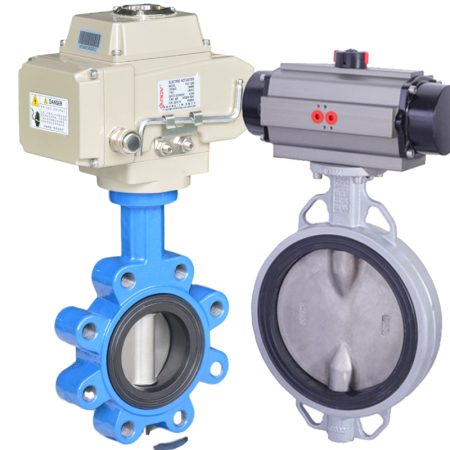
Definition and explanation of a wafer butterfly valve
A wafer-style butterfly valve is a type of flanged butterfly valve that is designed to be mounted between two flanges using bolts or screws. Compared to other types of butterfly valves, wafer-style butterfly valves have a slim profile, which makes them lighter and more cost-effective. They are widely used in low-pressure applications, such as HVAC systems, water treatment, and food processing, where space is limited, and a low-profile valve is required. The valve’s disc, also known as the butterfly, rotates around a central stem to open or close the valve. When fully open, the disc is parallel to the flow of fluid or gas, creating an unobstructed flow path and a low-pressure drop. The thin body of a wafer-style butterfly valve means it can be installed easily without additional support, making them easier and less expensive to install than other types of butterfly valves. However, they may not be suitable for high-pressure applications due to their thin design and may require additional support to prevent damage to the flange faces.
Advantages and disadvantages of a wafer butterfly valve
One of the main advantages of a lug style butterfly valve is its compact design, making it more cost-effective and easy to install than other types of butterfly valves. They are lighter and require less space, making them ideal for applications where space is limited. They also have a lower price point than lug-style butterfly valves, which makes them an attractive option for low-pressure systems. Additionally, wafer-style butterfly valves offer a low-pressure drop and a high flow rate due to the valve’s design, allowing for efficient and reliable operation. However, wafer-style butterfly valves may not be suitable for high-pressure applications because of their thin body. They can also cause damage to flange faces if not installed properly or if subjected to excessive forces. Overall, wafer-style butterfly valves are a great option for low-pressure applications where cost-effectiveness and ease of installation are essential factors.
Ideal applications for a wafer butterfly valve
Wafer-style butterfly valves are ideal for applications where space is limited and a low-profile valve is required. They are commonly used in low-pressure systems, such as HVAC, water treatment, and food processing industries, where they can regulate the flow of fluids or gases efficiently and cost-effectively. Their compact design makes them easy to install between two flanges using bolts or screws, and their low price point makes them an attractive option for low-pressure systems that require multiple valves. Additionally, wafer-style butterfly valves offer a high flow rate and low-pressure drop due to their design, making them suitable for applications where efficient fluid or gas control is necessary. However, it is essential to consider the specific application’s requirements, such as pressure, temperature, and flow rate, before selecting a wafer-style butterfly valve to ensure optimal performance and safety.
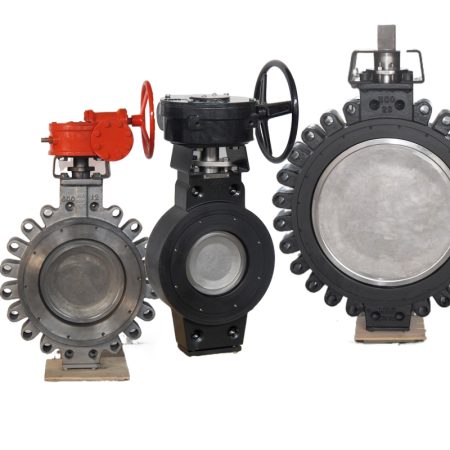
What is a Lug Butterfly Valve?
A lug-style butterfly valve is a type of butterfly valve that differs from wafer-style butterfly valves in its design and installation. Unlike wafer-style butterfly valves, which are installed between two flanges, lug-style butterfly valves have threaded inserts on the valve’s body, allowing them to be bolted to a system without additional bolts or nuts. This makes them easier to install and remove for maintenance purposes. Lug-style butterfly valves are also designed with thicker bodies, making them suitable for high-pressure applications that require increased durability and strength. They are commonly used in industries such as oil and gas, chemical processing, and power generation, where high-pressure applications are prevalent. Additionally, lug-style butterfly valves offer bi-directional operation, meaning they can be installed with flow in either direction, providing greater flexibility in system design. However, their thicker body and threaded inserts make them more expensive than wafer-style butterfly valves, and they require more space to install.
Definition and explanation of a lug butterfly valve
A lug-style butterfly valve is a type of butterfly valve that is designed to be bolted directly to a system with threaded inserts on the valve’s body. Unlike wafer-style butterfly valves, which are installed between two flanges, lug-style butterfly valves have lugs on their body, allowing them to be bolted onto the system’s flange without additional bolts or nuts. The valve’s disc, also known as the butterfly, rotates around a central stem to open or close the valve. When fully open, the disc is parallel to the flow of fluid or gas, allowing for an unobstructed flow path and low-pressure drop. Lug-style butterfly valves are commonly used in high-pressure applications, such as oil and gas, chemical processing, and power generation industries. The valves are designed with thicker bodies, making them more durable and better suited to withstand greater pressures. However, their thicker body makes them more expensive than wafer-style butterfly valves, and they require more space to install.
Advantages and disadvantages of a lug butterfly valve
One of the main advantages of a lugged butterfly valve is its strength and durability, making it ideal for high-pressure applications. The threaded inserts on the valve’s body allow it to be bolted directly onto a system’s flange without additional bolts or nuts, making installation and removal easier and more efficient. Additionally, lug-style butterfly valves offer bi-directional operation, meaning they can be installed with flow in either direction, providing greater flexibility in system design. However, their thicker body and higher material costs make them more expensive than wafer-style butterfly valves. Lug-style butterfly valves may also require more space to install, making them less ideal for applications where space is limited. Additionally, improper installation or over-torquing of the bolts can cause damage to the valve’s lugs, reducing its effectiveness and lifespan. Overall, lug-style butterfly valves are a reliable and durable option for high-pressure applications that require increased strength and durability, but they come at a higher cost and may require more space for installation.
Ideal applications for a lug butterfly valve
Lug style butterfly valves are ideal for high-pressure applications that require increased strength and durability. They are commonly used in industries such as oil and gas, chemical processing, and power generation, where high-pressure applications are prevalent. Lug-style butterfly valves can handle greater pressure than wafer-style butterfly valves due to their thicker body and the ability to be bolted directly onto a system’s flange without additional bolts or nuts. Additionally, they offer bi-directional operation, providing greater flexibility in system design and installation. However, it is essential to consider the specific application’s requirements, such as pressure, temperature, and flow rate, before selecting a lug-style butterfly valve to ensure optimal performance and safety. Improper installation or over-torquing of the bolts can cause damage to the valve’s lugs, reducing its effectiveness and lifespan, making proper installation critical for optimal performance.
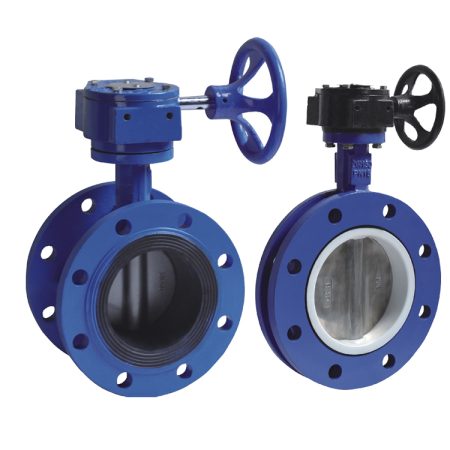
Comparison Between Wafer vs Lug Style Butterfly Valve
When it comes to butterfly valves, there are two main types: wafer and lug style. Wafer butterfly valves are lighter and more compact, making them a popular choice for smaller pipelines where space is at a premium. They are also easier to install and maintain due to their simple design. Lug style butterfly valves, on the other hand, offer more stability and are better suited for larger pipelines and higher pressure applications. They are called “lug” valves because they have threaded inserts that allow them to be bolted onto the pipeline, providing extra support and preventing movement under pressure. Ultimately, the choice between wafer and lug style butterfly valves will depend on the specific needs of the application, including factors like pipeline size, pressure, and flow rates.
Key differences between wafer vs lug style butterfly valve
Wafer and lug style butterfly valves may look similar, but there are several key differences between the two. One of the main differences is in the way they are installed. Wafer butterfly valves are sandwiched between two flanges and held in place with bolts, while lug style butterfly valves have threaded inserts that allow them to be bolted directly onto the pipeline, making them more secure. Lug style butterfly valves are also generally larger and heavier than wafer butterfly valves, making them better suited for high-pressure applications. They also tend to be more expensive due to their added size and complexity. Ultimately, the choice between wafer and lug style butterfly valves will depend on the specific needs of the application, including factors like pipeline size, pressure, and flow rates.
Factors to consider when selecting between wafer vs lug style butterfly valve
When selecting between wafer and lug style butterfly valves, there are several factors to consider. One of the most important is the size of the pipeline. Wafer butterfly valves are generally lighter and more compact, making them a good choice for smaller pipelines where space is at a premium. Lug style butterfly valves, on the other hand, provide more stability and support, making them better suited for larger pipelines and higher pressure applications. The type of fluid being transported is also an important consideration, as certain fluids may require a particular type of valve material or design. Other factors to consider include the flow rate, pressure, temperature, and the overall system requirements. Ultimately, the selection between wafer and lug style butterfly valves will depend on the specific needs of the application and should be made in consultation with a qualified engineer or valve specialist.
Conclusion
In conclusion, both wafer and lug style butterfly valves are popular choices for controlling the flow of fluids in pipelines, but they differ in several key ways. Wafer butterfly valves are lightweight and compact, making them ideal for smaller pipelines where space is limited. They are easy to install and maintain due to their simple design, but may not be as secure as lug style butterfly valves. Lug style butterfly valves offer more stability and support, making them suitable for larger pipelines and higher pressure applications. They are more complex and expensive than wafer butterfly valves, but provide a more secure and reliable solution for fluid control.
When selecting between wafer and lug style butterfly valves, there are several factors to consider, including pipeline size, type of fluid being transported, flow rate, pressure, temperature, and system requirements. It is important to consult with a qualified engineer or valve specialist when making this decision to ensure that the selected valve is appropriate for the specific application.
Ultimately, the choice between wafer and lug style butterfly valves will depend on the needs of the application and the specific advantages and disadvantages of each valve type. Both types of valves have their own unique benefits, and it is up to the user to determine which one is best for their particular situation. Whether it is a wafer or lug style butterfly valve, proper selection, installation, and maintenance can ensure optimal performance and longevity of the valve.
Recap of key points
To recap, wafer and lug butterfly valves are two common types of valves used for controlling fluid flow in pipelines. Wafer butterfly valves are lightweight and compact, making them suitable for smaller pipelines where space is limited. They have a simple design that makes them easy to install and maintain, but may not provide as much stability or security as lug style butterfly valves. Lug style butterfly valves are larger and heavier, making them better suited for high-pressure applications and larger pipelines. They offer more stability and support, but are also more complex and expensive than wafer butterfly valves. When selecting between these two valve types, it’s important to consider factors such as pipeline size, type of fluid being transported, flow rate, pressure, temperature, and system requirements. Consulting with a qualified engineer or valve specialist can help ensure the appropriate valve is selected for the specific application.
Final thoughts and recommendations on selecting between wafer vs lug style butterfly valve
In conclusion, selecting between wafer and lug style butterfly valves requires careful consideration of the specific needs of the application. Both valve types have their own advantages and disadvantages, and the decision ultimately comes down to a variety of factors including pipeline size, fluid type, flow rate, pressure, temperature, and system requirements. It is important to consult with a qualified engineer or valve specialist to ensure that the selected valve is appropriate for the specific application. Proper installation and maintenance of the selected valve can also help maximize its performance and longevity. Ultimately, the most important factor to consider when selecting between wafer and lug style butterfly valves is the safety and reliability of the valve in the application it will be used in.



